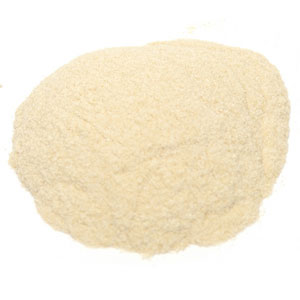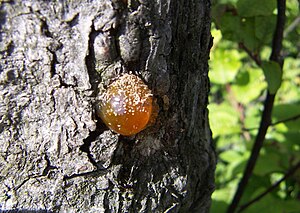
Food additives are substances added to food to preserve flavor or enhance taste, appearance, or other sensory qualities. Some additives have been used for centuries as part of an effort to preserve food, for example vinegar (pickling), salt (salting), smoke (smoking), sugar (crystallization), etc. This allows for longer-lasting foods such as bacon, sweets or wines. With the advent of processed foods in the second half of the twentieth century, many additives have been introduced, of both natural and artificial origin. Food additives also include substances that may be introduced to food indirectly in the manufacturing process, through packaging, or during storage or transport.

The human microbiome is the aggregate of all microbiota that reside on or within human tissues and biofluids along with the corresponding anatomical sites in which they reside, including the skin, mammary glands, seminal fluid, uterus, ovarian follicles, lung, saliva, oral mucosa, conjunctiva, biliary tract, and gastrointestinal tract. Types of human microbiota include bacteria, archaea, fungi, protists, and viruses. Though micro-animals can also live on the human body, they are typically excluded from this definition. In the context of genomics, the term human microbiome is sometimes used to refer to the collective genomes of resident microorganisms; however, the term human metagenome has the same meaning.

Gum arabic is a natural gum originally consisting of the hardened sap of two species of the Acacia tree, Senegalia senegal and Vachellia seyal. However, the term "gum arabic" does not actually indicate a particular botanical source. The gum is harvested commercially from wild trees, mostly in Sudan (80%) and throughout the Sahel, from Senegal to Somalia. The name "gum Arabic" was used in the Middle East at least as early as the 9th century. Gum arabic first found its way to Europe via Arabic ports, so retained its name.
In medicine, the hygiene hypothesis states that early childhood exposure to particular microorganisms protects against allergies by strengthening the immune system. In particular, a lack of such exposure is thought to lead to poor immune tolerance. The time period for exposure begins before birth and ends at school age.

Lecithin is a generic term to designate any group of yellow-brownish fatty substances occurring in animal and plant tissues which are amphiphilic – they attract both water and fatty substances, and are used for smoothing food textures, emulsifying, homogenizing liquid mixtures, and repelling sticking materials.

Xanthan gum is a polysaccharide with many industrial uses, including as a common food additive. It is an effective thickening agent, emulsifier, and stabilizer that prevents ingredients from separating. It can be produced from simple sugars using a fermentation process and derives its name from the species of bacteria used, Xanthomonas campestris.
Prebiotics are compounds in food that foster growth or activity of beneficial microorganisms such as bacteria and fungi. The most common environment considered is the gastrointestinal tract, where prebiotics can alter the composition of organisms in the gut microbiome.

Gut microbiota, gut microbiome, or gut flora, are the microorganisms, including bacteria, archaea, fungi, and viruses, that live in the digestive tracts of animals. The gastrointestinal metagenome is the aggregate of all the genomes of the gut microbiota. The gut is the main location of the human microbiome. The gut microbiota has broad impacts, including effects on colonization, resistance to pathogens, maintaining the intestinal epithelium, metabolizing dietary and pharmaceutical compounds, controlling immune function, and even behavior through the gut–brain axis.
Food chemistry is the study of chemical processes and interactions of all biological and non-biological components of foods. The biological substances include such items as meat, poultry, lettuce, beer, milk as examples. It is similar to biochemistry in its main components such as carbohydrates, lipids, and protein, but it also includes areas such as water, vitamins, minerals, enzymes, food additives, flavors, and colors. This discipline also encompasses how products change under certain food processing techniques and ways either to enhance or to prevent them from happening. An example of enhancing a process would be to encourage fermentation of dairy products with microorganisms that convert lactose to lactic acid; an example of preventing a process would be stopping the browning on the surface of freshly cut apples using lemon juice or other acidulated water.
The enzyme xanthan lyase catalyzes the following process:

A stabiliser is an additive to food which helps to preserve its structure. Typical uses include preventing oil-water emulsions from separating in products such as salad dressing; preventing ice crystals from forming in frozen food such as ice cream; and preventing fruit from settling in products such as jam, yogurt and jellies. Some of these food additives may promote the growth of specific microorganisms in the gastrointestinal tract that can ferment them. The following hydrocolloids are the most common ones used as stabilisers:

Bifidobacterium is a genus of gram-positive, nonmotile, often branched anaerobic bacteria. They are ubiquitous inhabitants of the gastrointestinal tract though strains have been isolated from the vagina and mouth of mammals, including humans. Bifidobacteria are one of the major genera of bacteria that make up the gastrointestinal tract microbiota in mammals. Some bifidobacteria are used as probiotics.
In molecular biology, glycoside hydrolase family 5 is a family of glycoside hydrolases EC 3.2.1., which are a widespread group of enzymes that hydrolyse the glycosidic bond between two or more carbohydrates, or between a carbohydrate and a non-carbohydrate moiety. A classification system for glycoside hydrolases, based on sequence similarity, has led to the definition of >100 different families. This classification is available on the CAZy web site, and also discussed at CAZypedia, an online encyclopedia of carbohydrate active enzymes.
In molecular biology, glycoside hydrolase family 88 is a family of glycoside hydrolases.
Beta porphyranase is an enzyme responsible for the degradation of porphyran, which composes the cell wall of red algae. So far only five β-porphyranases have been identified: PorA and PorB are found in the marine bacteria Zobellia galactinovirans. A wild-type porphyranase activity has been found in Pseudoalteromonas atlantica. BpGH16B and BpGH86A have been found in the human gut bacterium, Bacteroides plebeius, of Japanese individuals.

The human virome is the total collection of viruses in and on the human body. Viruses in the human body may infect both human cells and other microbes such as bacteria. Some viruses cause disease, while others may be asymptomatic. Certain viruses are also integrated into the human genome as proviruses or endogenous viral elements.
Microbiota-accessible carbohydrates (MACs) are carbohydrates that are resistant to digestion by a host's metabolism, and are made available for gut microbes, as prebiotics, to ferment or metabolize into beneficial compounds, such as short chain fatty acids. The term, ‘‘microbiota-accessible carbohydrate’’ contributes to a conceptual framework for investigating and discussing the amount of metabolic activity that a specific food or carbohydrate can contribute to a host's microbiota.

A microbiome is the community of microorganisms that can usually be found living together in any given habitat. It was defined more precisely in 1988 by Whipps et al. as "a characteristic microbial community occupying a reasonably well-defined habitat which has distinct physio-chemical properties. The term thus not only refers to the microorganisms involved but also encompasses their theatre of activity". In 2020, an international panel of experts published the outcome of their discussions on the definition of the microbiome. They proposed a definition of the microbiome based on a revival of the "compact, clear, and comprehensive description of the term" as originally provided by Whipps et al., but supplemented with two explanatory paragraphs. The first explanatory paragraph pronounces the dynamic character of the microbiome, and the second explanatory paragraph clearly separates the term microbiota from the term microbiome.
The α-mannan degradation Mannan which can be found in the cell wall of yeast has a particular chemical structure, and constitutes a food source since humans begun eating fermented foods several thousands of years ago. To determine whether the intake of yeast mannans through fermented foods has promoted specific adaptations of the human gut microbiota, an international team of researchers studied the ability of Bacteroides thetaiotaomicron to specifically degrade yeast mannans.
Phocaeicola plebeius, formerly Bacteroides plebeius, is a microbe found in the human gut, most often found in Japan natives. It is able to digest porphyran, a polysacchide from Porphyra seaweed (nori) that humans cannot digest on their own. The porphyranase-encoding gene Bp1689 is believed to have been derived from the microbe Zobellia galactanivorans via horizontal gene transfer, as part of a gene cluster containing other carbohydrate-active enzymes.










